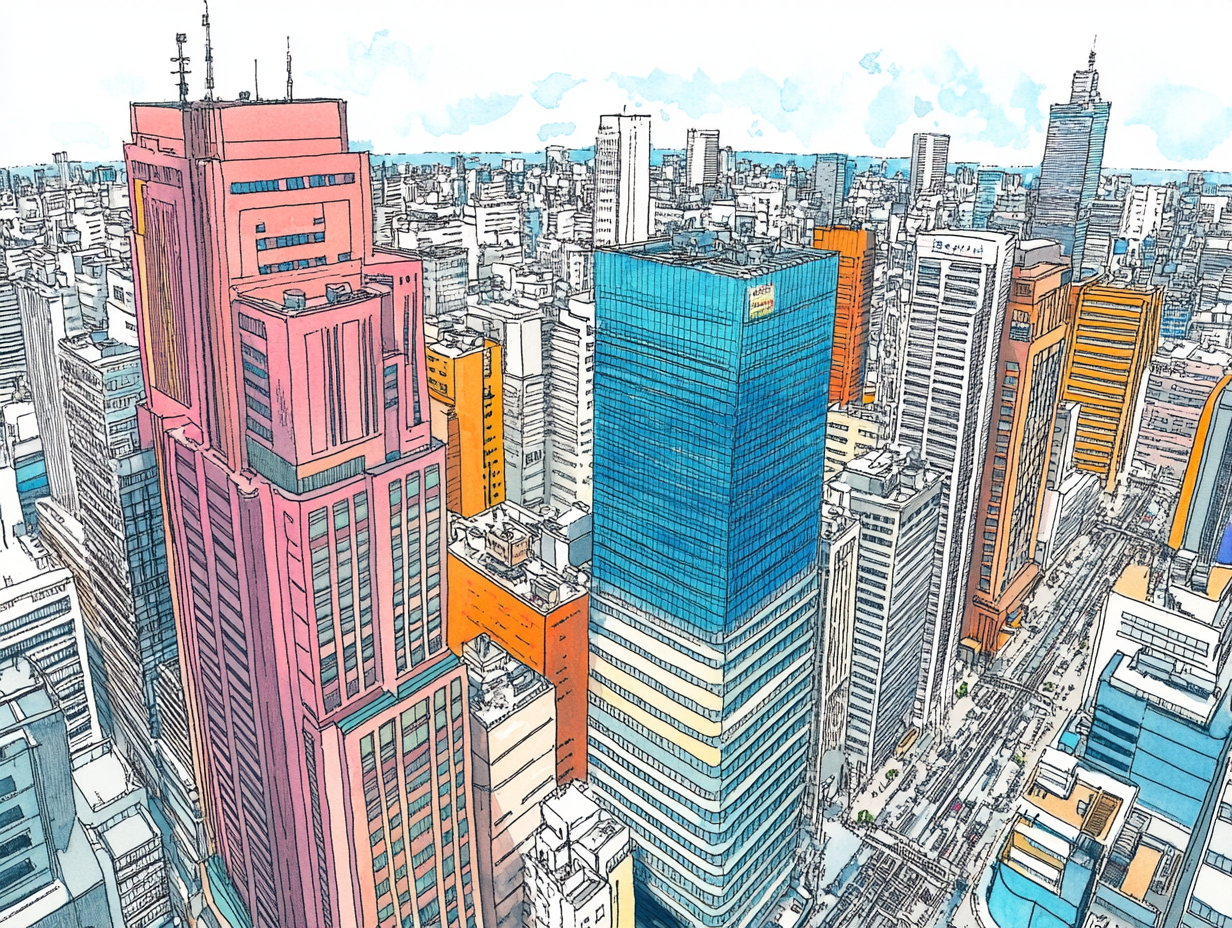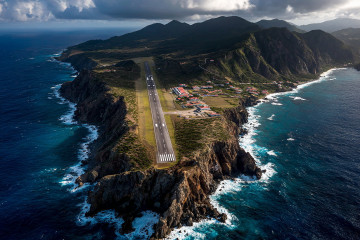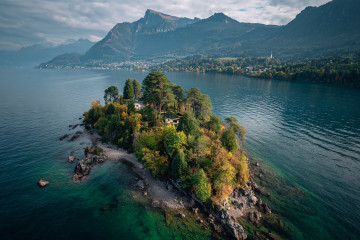To celebrate the slew of one-of-a-kind sights on ‘Top of the World’, we’ve put together an album of our favorite scenes from the mile-a-minute city of Tokyo, Japan. Be sure to hit the ground running—this metropolis doesn’t stop.
Shinjuku Skyscrapers
Cinéphiles (and fans of five-star luxury) know the towers to the left of this aerial shot well: They house the Park Hyatt Tokyo, where Sofia Coppola and her crew filmed Lost in Translation on location in 2003.
Rainbow Bridge
Since 1993, the Rainbow Bridge—which owes its name to the vivid lamps that collect solar energy during the day and illuminate it after sunset—has connected Shibaura Pier with the Odaiba waterfront area in Minato. The bridge isn’t multicolored every night, but it’s bathed in festive hues for the holiday season every year, and for special occasions.
Sensoji Temple
Sensoji Temple is also known as Asakusa Kannon Temple: As legend has it, in the 7th century, two fishermen found a golden statue of Kannon (or Guanyin), the Buddhist goddess of mercy, and the temple was constructed for her. According to The Japan Times, Sensoji receives more than 30 million visitors a year.
Kabukicho
Kabukicho (in Tokyo’s Shinjuku neighborhood) is the city’s largest red-light district, though most of the entertainment to be found there isn’t quite so X-rated. Host and hostess clubs rub shoulders with everything from love hotels to bars and pachinko parlors. It’s a marvelous place to go people-watching, but be on the lookout for unexpected costs: At a host and hostess club, a few cocktails can ring in at over 10,000 yen (about $90).
Flood-Control Silos
Tokyo sits squarely in the middle of a floodplain and 30 percent of its population lives below sea level, which means that summer monsoons (which can dump four inches of water on the city per hour) can cause catastrophic damage. The city’s elaborate flood control system—including five futuristic silos like this one, full of 60-foot-high concrete pillars—is so efficient that it can clear enough water to drain an Olympic swimming pool in 12 seconds.
Tsukiji Market
Located in central Tokyo between the Sumida River and the Ginza district, Tsukiji Market is the largest wholesale fish and seafood market in the world. It opens at 3:00 most mornings and between 5:20 and about 10:00, licensed bidders from around the world compete to purchase tons of fish. Much of the auction process is closed to tourists, but they can view the action from designated areas between 5:00 and 6:15 (and shake off their jet lag with a sushi breakfast in the market’s retail space).
Capsule Hotel
Tokyo’s Nine Hours is a capsule hotel, where floors of podlike, streamlined rooms (which have little more than a bed, shelves, outlets and sometimes a television) provide travelers with the bare necessities and offer communal bathing areas and lockers. While they wouldn’t suit claustrophobic travelers, capsule hotels are exceedingly budget friendly: A bed and a shower can be yours for about $30.
Shibuya Crossing
At peak times of day, more than 1,000 people are said to stream along the crosswalks each time the light changes at Japan’s busiest intersection. Connoisseurs say that the hypnotic view is best on Friday and Saturday nights and that the Starbucks on the second floor of the Q-front building is a particularly good vantage point (if you’re lucky enough to get a seat there).
Robot Restaurant
Since opening its doors in the summer of 2012, Robot Restaurant—a cabaret-style show featuring scantily clad dancers, massive robots, raucous pop music and lasers—has become one of the most popular tourist attractions in Tokyo. Each 90-minute performance culminates in a battle between two robot armies—and an opportunity for guests to pose for pictures with the stars of the show.
Tokyo Tower
At 332.9 meters in height, Tokyo Tower is the second-tallest structure in Japan. When its 90-meter antenna was bolted into place at the conclusion of its construction in 1958, it was the tallest freestanding tower in the world—since the Eiffel Tower in Paris was 13 meters shorter.



